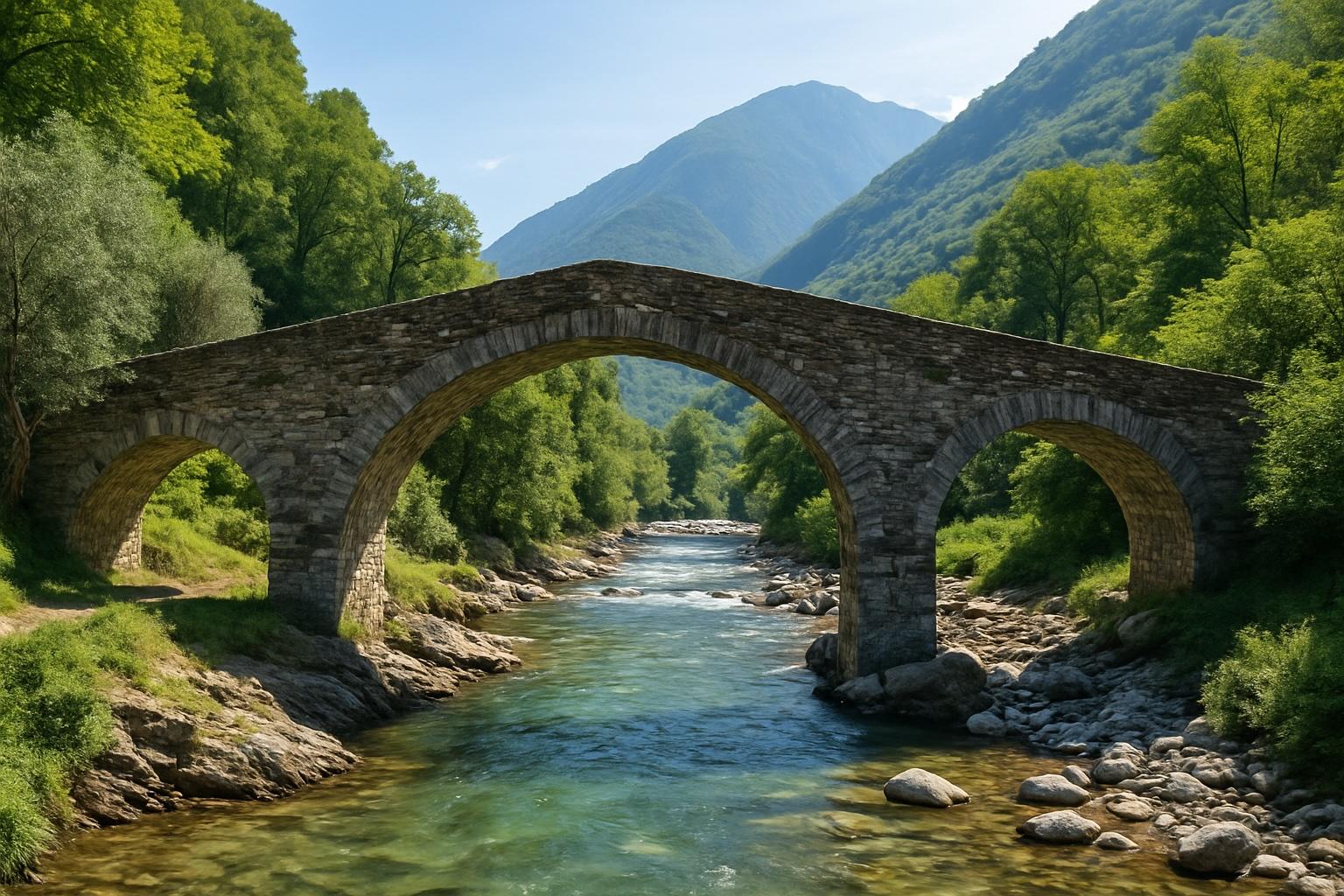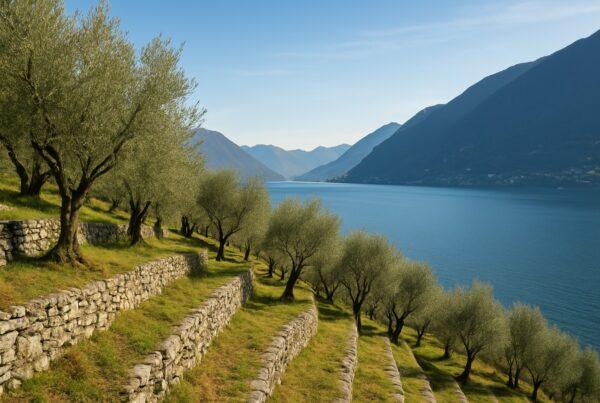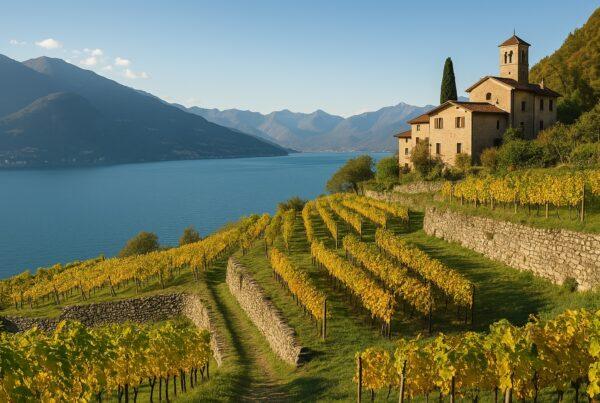Lake Como is a landscape of water and mountains, but also of crossings. To move through this territory has always meant confronting obstacles—rivers that rush from the Alps, ravines carved by torrents, steep slopes that divide villages. Across these divides, stone bridges rose, quiet works of architecture that still carry their elegance today. They are not just passages of stone: they are symbols of union, linking shores and stories, and reminding us that connection is as vital as separation.
Medieval arches above the torrents
The oldest bridges of the region date back to medieval times, when commerce and pilgrimage routes required sturdy crossings. Built with local stone, their arches curve gracefully over streams and rivers, blending strength with beauty. Many were constructed by masons whose skill has survived in other works of Lombardy and Switzerland. Their bridges were designed to last, to withstand floods and centuries of footsteps, and indeed many remain intact today.
In Lecco, the Ponte Azzone Visconti stands as one of the most impressive examples. Commissioned in the 14th century by the Visconti family, rulers of Milan, it was not only a bridge but also a fortification. Its arches stretch across the Adda River, linking the lake with the plains beyond. For centuries it was a strategic point, controlling movement of armies and merchants. Today, though modern traffic surrounds it, the stone structure still holds its medieval dignity.
Bridges of the hidden valleys
Away from the main towns, smaller bridges hide in valleys and along mountain streams. The bridge of Nesso, with its twin arches spanning a dramatic gorge, is one of the most picturesque. Set against cascading waterfalls, it looks as if drawn from a painting, its stones weathered by centuries of spray. Local stories speak of lovers meeting here in secret, the bridge becoming not only a crossing but a stage for private dramas.
Other bridges, like those in the Val Senagra near Menaggio, reveal the daily life of past communities. These were not monumental works but modest links between hamlets, built by villagers with the same stone they used for houses and walls. Their simplicity is part of their charm: walking across them today, one imagines donkeys loaded with firewood, children running barefoot, traders carrying salt or cheese from valley to valley.
Function and meaning
Bridges were vital in shaping both economy and culture. They allowed goods to move—silk from Como to Milan, grain from the plains to the mountains, fish from the lake to distant markets. But they also allowed ideas and traditions to cross. Pilgrims traveling to sanctuaries, merchants bringing stories from afar, soldiers passing through with news of wars—all used the same arches. The bridges became silent witnesses of encounters, conversations, and exchanges.
Legends carved in stone
Around many of these bridges, legends grew. Some were said to be built with the help of the devil, who demanded the soul of the first to cross; clever villagers would send a goat or dog across instead, tricking the spirit. Others were linked to saints who blessed the crossings, protecting them from collapse. Such stories reveal the awe with which communities regarded these works. To build a bridge was to defy nature, and so myth was woven into mortar as surely as stone.
Architecture of resilience
The durability of these bridges lies in their design. The arch, perfected by Roman engineering and inherited by medieval builders, distributes weight evenly, allowing stone to support immense forces. Combined with careful choice of materials—often granite or limestone from nearby quarries—the result was resilience. Floods and centuries of wear could not break them. Even when partially damaged, many bridges were repaired rather than replaced, preserving continuity with the past.
Walking across history
Today, many of these bridges can still be crossed on foot. Trails around Lake Como often lead hikers to them unexpectedly: a path descends into a shaded valley, and suddenly an arch of stone appears, spanning a torrent that roars below. Crossing feels like stepping into another time. The air is cool, the sound of water constant, and the stones underfoot carry the marks of countless journeys. Some bridges are integrated into popular routes, like the Greenway del Lago, while others require detours into forgotten valleys where silence reigns.
Perspectives from the water
Some bridges are best admired from below, where their arches frame the flow of water and the sky beyond. Seen from a boat, the Ponte di Nesso appears like a gate between worlds, its reflection creating a circle of stone and light. The Ponte Azzone Visconti, viewed from the river, reveals the strength of its foundations, gripping the earth like roots. To see these structures from the perspective of water is to understand them not only as connectors but as companions of the landscape.
Metaphors of connection
Beyond their practical use, bridges carry metaphorical weight. They are images of dialogue between communities, between shores, between past and present. On Lake Como, where isolation was once the norm, bridges represented possibility: the chance to reach beyond one’s village, to trade, to meet, to grow. Even today, they remind us that connection is the essence of culture.
Stone arches that endure
The ancient bridges of Lake Como may not draw the same attention as villas or cathedrals, but they are equally important. They endure not because they are monumental but because they are humble, integrated into daily life. Each arch, each stone, speaks of hands that shaped them, of feet that crossed them, of lives that depended on them.
To walk across one today is to share in that continuum. The water still rushes beneath, the stones still carry weight, and the landscape still frames them with mountains and sky. These bridges link not only shores but also stories—stories of resilience, of passage, of human will against nature. They are reminders that sometimes the most profound beauty is not in the grand, but in the quiet endurance of stone that holds communities together.




